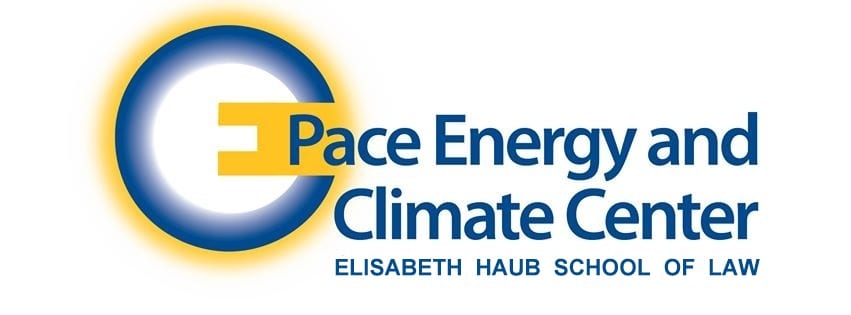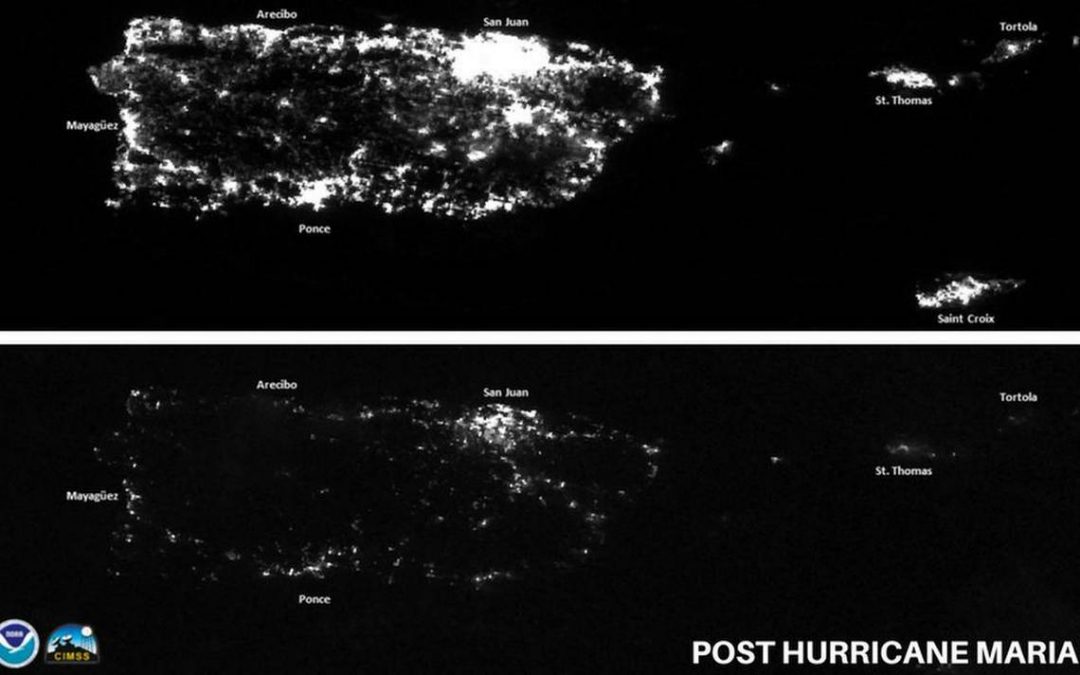Pace Energy and Climate Center mourns the deaths of George Floyd, Breonna Taylor, Tony McDade, Ahmaud Arbery, and all victims of police brutality and racially motivated violence. We are in solidarity with those protesting for justice for Black and Brown people and the reform of prejudicial policing systems, and condemn the police responding to these protests with further brutality. As advocates for equitable energy policy and environmental justice, we know that those goals are inseparable from, and cannot be attained without, racial justice in all areas of society. The primary among these is the right for the Black community to live without fearing for their lives. The Pace Energy and Climate Center, in coordination with our allies, will continue to advocate for justice in our work while listening to and learning from communities of color, and we will hold ourselves accountable to identify and respond to systemic racism within our own lives, work, and institution.
We wish everyone a joyous Juneteenth, and for true freedom and equality for all to come quickly.
Seven years ago homes, businesses and factories in New York, on Long Island and across large parts of New Jersey were without power, hot water and heat. A handful of sites, including New York University (NYU), the Long Island Home (Amityville, NY), and the Breevort (New York City) continued to provide electricity to employees, students, patients, customers and residents. They had invested in combined heat and power (CHP) systems capable of delivering high efficiency, environmentally superior and resilient power and heat at their facilities. The U.S. Department of Energy publication “Combined Heat and Power: Enabling Resilient Energy Infrastructure for Critical Facilities” March 2013, includes 14 case studies of CHP facilities that ran through Superstorm Sandy and other storms and blackout events in other regions of the country.
The U.S. Department of Energy provides the following definition at their Combined Heat & Power eCatalog site:
Combined heat and power (CHP), also known as cogeneration, produces both electricity and thermal energy on-site, replacing or supplementing electricity provided from a local utility and fuel burned in an on-site boiler or furnace. CHP systems can be designed to operate independently from the electric grid providing reliable power and thermal energy to keep critical facilities running during grid outages.
Most of the existing CHP systems utilize natural gas. CHP systems that operate for a large portion of the year and perform at a high total system efficiency yield social benefits in the form of reduced air emissions, lower greenhouse gases, greater levels of energy efficiency when compared with separately provided power, heating and cooling systems.
Well designed and operated CHP systems represent a smart way to use natural gas in an efficient, environmentally responsible manner to meet the energy needs of businesses, factories, healthcare and university complexes and multifamily and mixed use campuses. As states, metro areas and cities transition to a carbon free energy future, CHP technologies should play an important role in a clean energy roadmap.
In recognition of social benefits, renewable energy and energy efficiency technologies are often rewarded with state incentives, favorable utility regulatory treatment and federal and state tax preferences. CHP systems provide many of the same benefits as renewable and efficiency technologies that qualify for preferential state and federal treatment. Yet the same societal benefits provided by CHP are either not rewarded at all, or not in a manner that’s nearly commensurate with qualifying renewable and efficiency technologies.
Smartly designed CHP systems remain an invaluable component in building an effective bridge from our existing energy structure to the energy ecosystem of the next generation. Smartly designed policies are best when fashioned to be technology neutral and awarded on the basis of demonstrated, measured outcomes that society desires.
Author: Tom Bourgeois, Deputy Director of the Pace Energy & Climate Center and Director of the U.S. Department of Energy’s New York / New Jersey Combined Heat and Power, Technical Assistance Partnership. He is primary or contributing author of numerous reports, briefs, presentations on the topic of combined heat and power. Mr. Bourgeois was a co-author of Combined Heat and Power: Enabling Resilient Energy Infrastructure for Critical Facilities. Prepared for Oak Ridge National Labs, ORNL/TM-2013/100. March 2013.

THE ELISABETH HAUB SCHOOL OF LAW CELEBRATES 30 YEARS OF CLEAN ENERGY WORK
AT THE PACE ENERGY AND CLIMATE CENTER
WHITE PLAINS, NY – Pace University’s Elisabeth Haub School of Law today celebrated 30 years of work at the Pace Energy and Climate Center (PECC). For three decades, PECC has been at the leading edge of creating and implementing solutions to our energy and climate challenges on the local, state, regional, national, and international levels.
“Pace’s Energy and Climate Center is an important part of the Pace Law campus and our community,” said Dean Horace Anderson. “It is a force for legal and policy change, and has trained many Pace Law students to become the next generation of smart energy professionals, working at home and abroad to create more resilient, sustainable communities.”
“This little Center has had an outsized positive effect on clean energy policy over the past thirty years,” said Karl R. Rábago, current Center director. “We fight well above our weight because of the brilliant and inspired leadership of our founder, Dick Ottinger; because the high caliber of our staff, interns, and colleagues; and because of the steadfast support of our community, funders, and clients. I can’t wait to see what we do next!”
PECC was founded by Pace Law Dean Emeritus Richard Ottinger. In recognition of his decades of service to the Center, numerous elected officials issued proclamations and letters of support commending him for his service, including Congressman Eliot L. Engel, New York State Senator Andrea Stewart Cousins, New York State Assembly Members Amy R. Paulin, Steven Otis, and Thomas J. Abinanti, Westchester County Executive George Latimer, Chairman of the Westchester County Board of Legislators Benjamin Boykin, Westchester County Board of Legislator Catherine Parker, and Mayor of the City of White Plains Thomas Roach.
PECC is one of eight centers and institutes that are a part of the Pace Law campus. PECC is the leading Center working at the intersection of energy and the environment, engaging government decision makers and key stakeholders with robust research and analysis in law and policy. Over time, the Center has grown from its initial focus on energy regulatory law and policies to tackle transportation and fuels, as well as climate change mitigation and resilience. PECC directly engaged in complex regulatory proceedings in New York and several other states, and advocates successfully for policies to improve energy efficiency, advance renewable energy and distributed generation, account for environmental impacts in energy decisions, and reduce greenhouse gas emissions.
PECC is a critical part of Pace Law’s environmental law program, which is consistently ranked among the top in the country by “US News &World Report.” The Elisabeth Haub School of Law at Pace University launched its environmental law program in 1978; it has long been ranked among the world’s leading university programs. Pace’s doctoral graduates teach environmental law at universities around the world. Pace’s J.D. alumni are prominent in environmental law firms, agencies and non-profit organizations across the U.S. and abroad.
About Elisabeth Haub School of Law at Pace University
Pace University’s Elisabeth Haub School of Law (Pace Law) offers Juris Doctorate, Master of Laws, and Doctor of Juridical Science in Environmental Law degrees, as well as a series of joint degree programs. The school, housed on the University’s campus in White Plains, New York, opened its doors in 1976 and has over 8,500 alumni around the world. The school maintains a unique philosophy and approach to legal education that strikes an important balance between practice and theory. For more information visit http://law.pace.edu.

Joseph O’Brien-Applegate, Energy Analyst Pace Energy & Climate Center
Tom Bourgeois, Deputy Director Pace Energy & Climate Center
As we mark the sixth anniversary of Superstorm Sandy, its impact is still fresh in the mind of many in the Northeast. These memories are reinforced by the still-unfolding damage done by Hurricane Michael, as well as that from hurricanes Harvey and Maria from 2017. Michael has left 1.3 million without power in the Southeast, and 17 dead so far. In 2012, Superstorm Sandy caused $19 billion in damages, left almost 2 million without power, and 43 dead in New York City alone.
In response to the damage caused by Superstorm Sandy and the prior year’s 2011 Halloween nor’easter, States across the Northeast launched programs to explore and promote the creation of microgrids. Microgrids are self-contained electric networks with on-site generation sources, and allow a number of buildings to operate even in the event of a power outage on the larger grid. Microgrids not only provide resiliency to critical infrastructure such as hospitals, government buildings, and first responders, they also provide places of refuge for displaced members of the community.
Microgrids with combined heat and power (CHP) are often the most cost effective means of providing affordable resiliency for campuses, blocks and neighborhoods. High efficiency, environmentally superior and economically advantageous CHP systems can serve a large portion of the normal electric and thermal loads for multiple buildings and customers who are in close proximity. The economic savings of providing both thermal energy and electric power from a single source, rather than separately purchasing power, heating and cooling can deliver a lower total cost of energy to the microgrid’s connected customers. CHP systems operating at total system efficiencies that are 50% or better than the status quo, typically deliver significant reductions in greenhouse gas and other harmful air pollutant emissions.
In Tokyo, Japan, a similar need exists for resiliency and centers of refuge to assist with power outages of extended duration. Tokyo, like New York City, is concerned about increasing grid congestion and has aggressive goals to reduce emissions of carbon and other pollutants in a very high-density area.
We had the privilege to discuss two microgrids in Tokyo with Mr. Tokudai Neda of Tokyo Gas and Professor Miki Muraki, Ph.D., of Chiba University Graduate School of Engineering. These projects address the multiple objectives of delivering low carbon energy and power at a high degree of reliability to Tokyo’s neighborhoods.
“Tokyo Gas Group is promoting the development of “smart energy communities” to make smarter use of energy by connecting the buildings in a community via a heat and electric power network. At the same time, we are pursuing improvements at the building level to turn homes, office buildings, and factories into smarter energy users.”
This is accomplished with a suite of resources including solar energy, combined heat and power, with communication, control and optimization systems that are designed to deliver “Smart Energy Networks”. One project, the Tamachi Smart Energy Network, connects six large buildings, including a hospital and a nursery school. The other project, Nihonbashi Area, consists of a new construction building with a central energy plant that will connect to existing buildings.
The Tamachi Smart Network
The Tamachi Smart Network is located near Tamachi Station in the center of Tokyo, and is separated into two “Blocks.” Block I consists of:
• A 10-story, 160 bed hospital,
• An 8-story public building, which also serves as a center of refuge, and
• A 6-story nursery school.
Block I is supplied by 845kW of CHP, 73kW of PV solar, as well as incorporating solar water heating panels and ground water for hot and cold water. During the Fukushima Earthquake of 2011 over 200,000 households lost power. All three buildings in Block I will be able to operate islanded from the grid for over 72 hours.
Block II is under construction, and will contain:
• A 36-story office building,
• A 31-story office building, and
• A 9-story hotel.
Block II will have its own central energy plant with 5MW of CHP, and also incorporate solar hot water heating.
The two central energy plants will each have smart controls and operation software, and will optimize their activity in tandem with each other based on the weather and the energy demand of each block. The two microgrids together will reduce CO2 emissions by 45%.
Nihonbashi Muromachi Smart Energy Network
The Nihonbashi Muromachi Smart Energy Network will connect a new-construction 25-story office building with existing buildings to create microgrid. The new construction building will house a central power generation plant with 23.4MW of CHP, and will provide electricity, heating, and cooling to the entire microgrid. The individual buildings connected to the new plant will also have their own small CHP systems for use in the winter for heating, but will rely on the central plant for more economical power in the summer.
The energy plant will be operated by Mitsui Fudosan TG Smart Energy, who will sell electricity and steam to the microgrid. The microgrid will be capable of operating islanded for one week, and is expected to reduce emissions of the area by 17%.
The construction of the new building, central energy plant, and most importantly the steam tunnels and electric lines connecting the existing buildings will be coordinated with a revitalization of the Nihonbashi Area’s streets and sidewalks. This coordination will allow minimal cost and disruption from the construction of the microgrid.
Lessons for New York and New Jersey
Commonalities between the development of microgrids in Japan and here in New York and New Jersey are that local factors, smart design and operation and a hospitable market and regulatory framework are indispensable to successful projects. Combined heat and power systems can be the centerpiece of affordable, resilient power districts that meet the highest environmental performance standards. One project under development in New York in particular, Proctors Theatre in Schenectady, shares the business model and benefits of the projects demonstrated to us by Mr. Neda and Professor Muraki. We were fortunate to receive a private tour of the planned facility organized by Congressman Tonko in August of this year.
Proctors Theatre is planning a microgrid across two blocks of downtown Schenectady. It will encompass the Theatre itself, which houses an existing central heating and cooling plant that serves the area, as well as an adjacent hotel, and a commercial office and retail complex. The microgrid will be powered by approximately 1MW of CHP, with additional thermal energy from the existing boilers and chillers.
Proctors is unique in that they already provide thermal and telecommunications services to surrounding buildings, but creating a microgrid to sell electricity to other customers still required a special Declaratory Ruling by the New York Public Service Commission exempting Proctors from regulation as a utility, and requiring National Grid to serve them. Codifying and clarifying the circumstances whereby microgrid developers can sell electricity to multiple/separate parties, as well as across right-of-ways, would greatly decrease the cost and time for developing microgrids.
Regulatory clarification regarding the terms and conditions of microgrid development and operation including fair and consistent practices in purchase and use of in-place capital equipment is absolutely essential to permit the market to develop, innovate and mature. Equally important is just recognition of the utilities’ interests as well as protocols for utility / microgrid interaction that fairly assigns costs and performance responsibilities. As the demand for smart, local, resilient and clean community energy and power continues to grow, regulatory bodies will have to set the legal structure and market framework that best advances the public interest. International collaboration with our colleagues, as with the Tokyo Gas Smart Networks: Smart Energy Communities group can advance best practices and lessons learned in developing environmentally superior, economically beneficial, and resilient microgrids.
Header Image: Nihonbashi Area by akky_cybozu on Flickr

Pace completed a brief on Puerto Rico’s opportunity to rebuild its grid in a manner that makes the island more resilient. We find that PREPA can take action now to lay a strong foundation for distributed energy resources (DER) to integrate with the transmission & distribution system, by making the right kind of capital equipment investments as it is being rebuilt. The future grid should be designed to accommodate far greater penetration of DER and ought to have the functionality to utilize DER as dynamic assets, supporting the grid. If PREPA fails to take actions to accommodate DER and beneficially utilize their grid support capabilities, it could face grid defection, and forego opportunities to significantly improve grid performance, productivity and system resiliency.
Pace strongly supports Puerto Rico’s integration of DER, renewable energy, and coordinated microgrids to utilize the natural resources of the island and manage an electrical grid that supplies the power needed. In partnership with IEEFA, we submitted comments to PREC on microgrids.
Pace has also been heavily engaged in this work throughout the Northeast. We promote knowledge of high efficiency combined heat and power as a back bone to microgrids in our region as the US DOE TAP by evaluating site screening and successful case studies. This work dovetails with our solar coalition work where we advocate for streamlined policies that facilitate and reduce the cost of integrating distributed energy resources to the existing electrical grid.

The idea of establishing a federal or state tax on carbon emissions is a concept gaining a lot of attention today. While everyone understands taxes, many don’t understand exactly how a tax on carbon would work, who would be impacted, and whether it would be effective in reducing climate-changing carbon emissions. Pace Energy and Climate Center, along with Sustainable Westchester Federated Conservationists of Westchester County, Citizens’ Climate Lobby New York State, and Citizens’ Climate Lobby Westchester, are hosting a forum to discuss the idea of a tax on carbon. Pace has secured a panel of national experts to discuss, and looks forward to having questions answered and ideas about carbon taxes discussed.
The Pace Energy and Climate Center panel discussion on carbon taxes:
Date: Monday, March 26, 2018
Time: 5:30pm-7:00pm
Location: Tudor Room, Preston Hall, Pace University Elisabeth Haub School of Law, 78 N. Broadway, White Plains, NY 10603.
In preparation of this discussion, Pace has assembled some helpful resources for basic knowledge about the carbon tax concept.
In its most simple form, a carbon tax is a fee levied by an agency of government on the production, transportation, or use of fossil fuels. Today, the price of fossil fuels and the products and services we get from fossil fuel use do not reflect the cost that carbon emissions impose on the climate and people. The idea behind a carbon tax is that if the price of things reflects the real cost, our purchase and use decisions will be more economical. Setting the right carbon tax and deciding which fuels or activities will be taxed are the first decisions that have to be made.
The next big question about carbon taxes is what to do with the money raised. Should the tax revenues go toward general government budgets? To offset the burden on consumers? To fund improvements and growth in clean energy technologies?
Below are listed a few resources that can serve as an introduction to the issue of carbon taxes. Some of these materials were prepared by advocates for carbon taxes.
Resources:
Vermont Law School Carbon Tax Primer
Carbon Tax Center
Northeast Regional Cap and Trade Initiative
Reuters on a National Carbon Tax
Carbon Fee and Dividend



